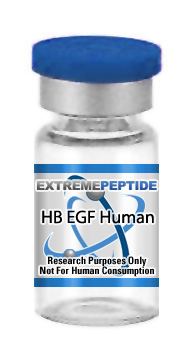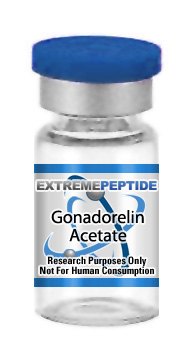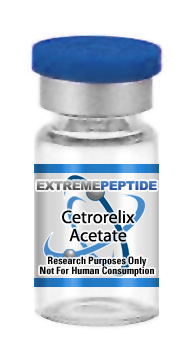(Click here to read our disclaimer)
Heparin binding EGF is part of the EGF mitogen group that includes other chemicals including amphiregulin, growth factor alpha, vaccinia growth factor, and rat schwanoma-derived growth factor. There are also various ligands from the erbB2/HER2 or neu receptor family within this group. A great deal of these trans-membranes precursors are considered to be ‘biologically active’, which means that HB EGF plays an active role in juxtacrine stimulation within adjacent cells.
Research has revealed a variety of reactions to HB EGF in animal bodies. It is believed that this peptide is expressed in cultured human macrophages that will impact the macrophage-mediated cellular proliferation within this body.
It also appears as though visceral obesity within the metabolic syndrome may increase fatty acid output, when exposed to EGF growth factor. This has been shown regularly in the adipose tissue of laboratory mice. It has been noted that myeloid leukemia cells have been may react to HB EGF by expressing diphtheria toxin receptors.
Inhibiting Cardiac Hypertrophy
GPCR receptor antagonists have been strongly documented as inducing cardiac hypertrophy though new research indicates that shedding HB EGF may result the metalloporoteinase activation.
- This will in turn transactivate the epidermal growth factor receptor which occurs during cardiac hypertrophy.
- An inhibitor of this HB EGF shedding known as KB-R7785 can be used to block this signaling to prevent cardiac hypertrophy. Metalloprotease 12 can be cloned to create a specific enzyme that will cause HB-EGF to shed within the heart.
- Metalloprotease may cause abrogated signaling of HB EGF while KB-R7785 may inhibit this shedding as well as annenuated hypertrophic changes.
This data suggests that mice that have cardiac hypertrophy may be assisted by metalloprotease in managing their condition. It also suggests that HB EGF shedding may be an encouraging therapeutic strategy for the cardiac hypertrophy symptoms these animals have expressed.
Potential to Restore Neurogenesis in the Hippocampus
It is believed that neurogenesis helps to contribute to adult brain function, though this declines with age.
- Research indicates that applying growth factors to the brain tissue may enhance adult neurogenesis though the age where this response would be ideal is unknown.
- To test this theory HB EGF was applied to adult mice at a variety of ages and the responses of the brain as well as the quality of the brain tissue was regularly tested.
Research demonstrated that the aged brains of the mice would retain the capacity to respond to exogenerous growth factor along with increased neurogenesis. This implies that HB EGF may have therapeutic potential in enhancing the brain’s ability to ward off age related neurological disorders.
Introducing HB EGF to metalloprotease inhibitors and the abrogation of EGF receptors and their kinase activity within selective antisense oligonucleotides and pharmacological inhibitors which can help to protect the cells against Ang II mediated cardiac hypertrophy.
This can be demonstrated by introducing lysophosphatidic acid induced ectodomain by means of shedding the HB EGF growth like factor. This is considered critical to the formation of the tumors that make up an ovarian cancer infection, which has become a prime candidate for research.
Sources:
http://www.nature.com/nm/journal/v8/n1/abs/nm0102-35.html
http://onlinelibrary.wiley.com/doi/10.1046/j.1474-9728.2003.00046.x/full
Click here to view our entire PDF research library
Click here to view/download the PDF version of this article


